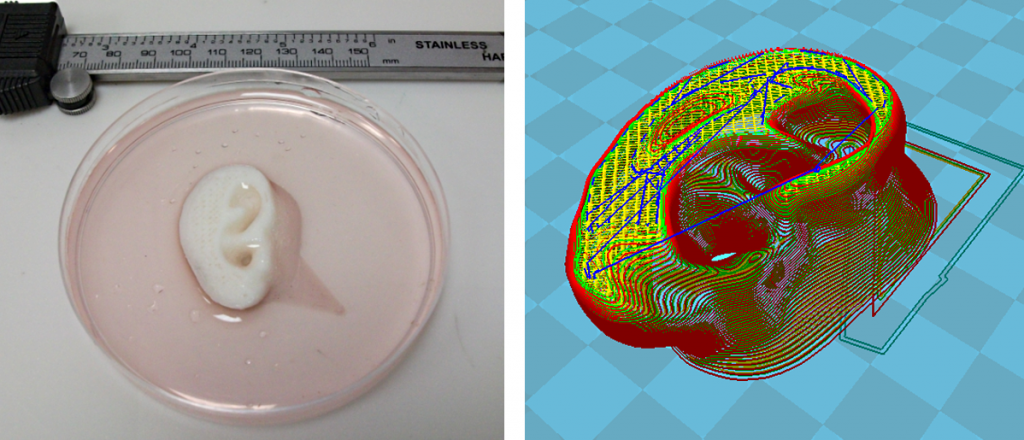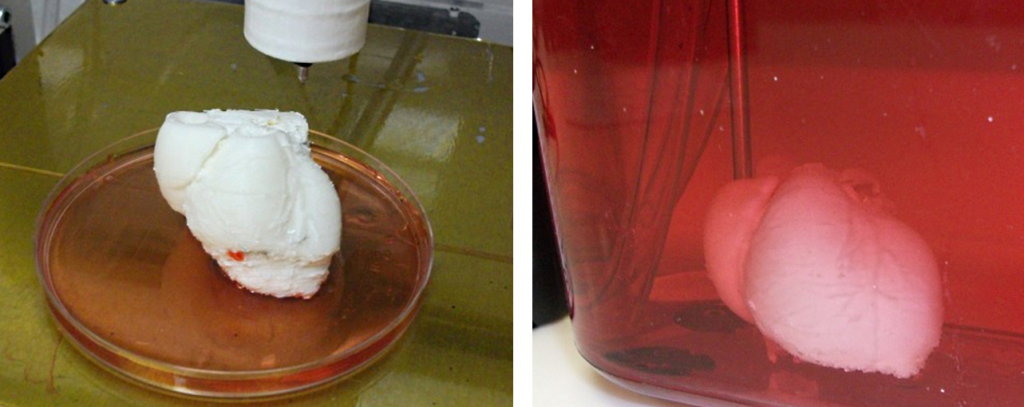Over recent months there have been an increasing number of advances in biomedical-related 3D printing technologies. We have already seen many incredible ways in which 3D printing has been able to work in conjunction with the human body to one end, and that is to change the lives of thousands of individuals for the better.
able to work in conjunction with the human body to one end, and that is to change the lives of thousands of individuals for the better.
One of the most exciting frontiers is that of 3D bioprinting, which is highly anticipated and could reveal potentially game-changing biomedical technology. One of the biggest issues prohibiting 3D bioprinting technology is how to make true 3D representative biological structures? But this technology could be about to take an open-source turn, which could accelerate and advance bioprinting as a feasible regenerative alternative to traditional treatments.
Engineers at Swansea University in Wales, whom we’ve covered before, have developed a revolutionary biodegradable tissue scaffold. This new biomaterial, called Celleron, comes as both a liquid biopolymer and a filament derivative. The development is led by Dr. Dan Thomas of Swansea University’s College of Engineering, able to 3D print Celleron and replicate the complex underlying structures of complex tissue architectures.
“In order to engineer a solution, we came up with 3D Printable Celleron, which consists of a complex formulation containing; PLLA/PLGA, phospholipids, ibuprofen, graphene, collagen, antibiotics and agarose. We have formulated this matrix-based polymer which provides a high resolution support for surrounding cells. Once printed, this ghost structure can be used as a materials to provide independent cell adhesion, cell-to-cell communication and differentiation,” says Dr. Thomas.
Post 3D printing, Celleron ferments when a biological activator is added, which causes it to become microporous in nature. This ensures that there is a massive increase in surface area and mechanical strength, and that there is a path deep into the structure for the migration of cells. Protein growth factors are then saturated into the porous scaffold to turn it into a biologically attractive composite.

The prototype human ear 3D bioprinted using Celleron, prior to it being transferred into a
bioreactor and the complex toolpath which produces a macro porous structure
This top-down 3D printing process allows for the fabrication of an accurate structure, so there could uses in a number of applications. Earlier this year the Swansea team bioprinted the complex geometry of a child’s ear from Celleron.
“The ear was one of the early structures engineered because of its technically challenging nature,” Dr. Thomas explained. “Using chondrocytes cells, together with nutrients and critical growth factors then this process produced an effective cartilage-based composite. These experiments showed that when Celleron is placed into a stem cell culture scaffold retains biological capability and cells were able to proliferate quickly. Subsequently, the Celleron polymer composite becomes a tissue.”
The Swansea team firstly engineered the 3Dynamic Alpha 3D bioprinter. These workhorse 3D bioprinters are currently used by many researchers from across the world to deposit a range of biologically supportive materials.
The team are also planning to use this similar bioprinting process to engineer tooth implants and then hope to develop durable biological heart valve tissue structures via 3D technology. In order to show the potential of Celleron as a 3D printable material, the researchers at Swansea 3D printed the entire internal complex structure of the human heart. This was done to awaken people’s imaginations of 3D bioengineering technology and its potential as a viable future process.

Heart scaffold 3D printed using Celleron and that scaffold when placed into a 3Dynamic Zeno
Tissue Bioreactor at the Centre for NanoHealth Swansea University
Research is now focusing on animating these tissues using bioreactor processes. For instance, adult Mesenchymal stem cells taken from bone marrow are being used to test whether different cell types can be used to engineer composite tissues which are composed of multiple cell types.
“The beauty of Mesenchymal stem cells is that they can be differentiated into a variety of tissues, provide trophic support, and can also modulate immune response. We are now exploring whether we can differentiate tissues to become vascularised. For this we need to work with endothelial stem cells, which are one of the three types of multipotent stem cells found in the bone marrow. It is these cells which line blood vessels and this may offer a means of achieving this goal,” noted Dr. Thomas.
Next year the Swansea team plan to share this technology for biopolymer formulation and 3D bioprinting processes with researchers from across the world. This is in order to ensure that there is rapid acceleration of this technology so that the area of 3D bioprinting technology can be refined quickly. If successful then hopefully this technology will one day make a significant difference in the lives of many people.
Let us know what you think about this ongoing UK-based research in the Celleron Bioprinting Material forum thread over at 3DPB.com.
Subscribe to Our Email Newsletter
Stay up-to-date on all the latest news from the 3D printing industry and receive information and offers from third party vendors.
Print Services
Upload your 3D Models and get them printed quickly and efficiently.
You May Also Like
3D Printing News Briefs, July 2, 2025: Copper Alloys, Defense Manufacturing, & More
We’re starting off with metals in today’s 3D Printing News Briefs, as Farsoon has unveiled a large-scale AM solution for copper alloys, and Meltio used its wire-laser metal solution to...
3DPOD 260: John Hart on VulcanForms, MIT, Desktop Metal and More
John Hart is a Professor at MIT; he´s also the director of the Laboratory for Manufacturing and Productivity as well as the director of the Center for Advanced Production Technologies....
3D Printing News Briefs, June 28, 2025: Defense Accelerator, Surgical Models, & More
In this weekend’s 3D Printing News Briefs, 3YOURMIND was selected to join an EU Defense Accelerator, and PTC has announced model-based definition (MBD) capabilities within Onshape. Finally, a study out...
EOS in India: AM’s Rising Star
EOS is doubling down on India. With a growing base of aerospace startups, new government policies, and a massive engineering workforce, India is quickly becoming one of the most important...

































